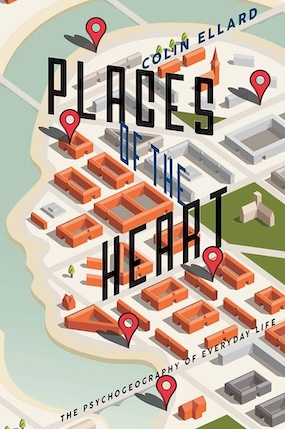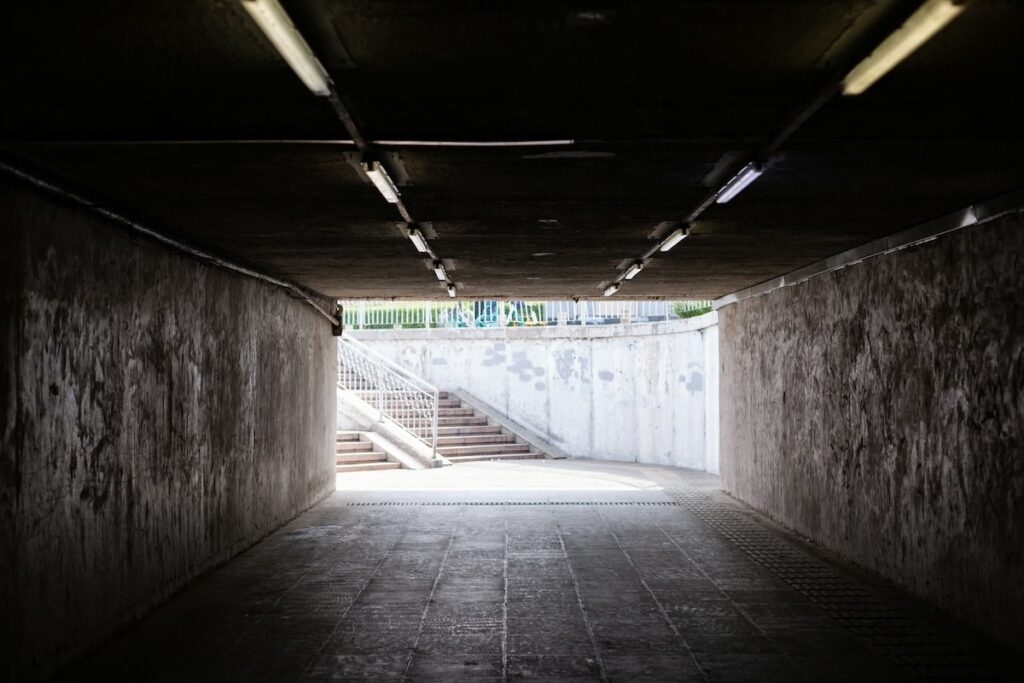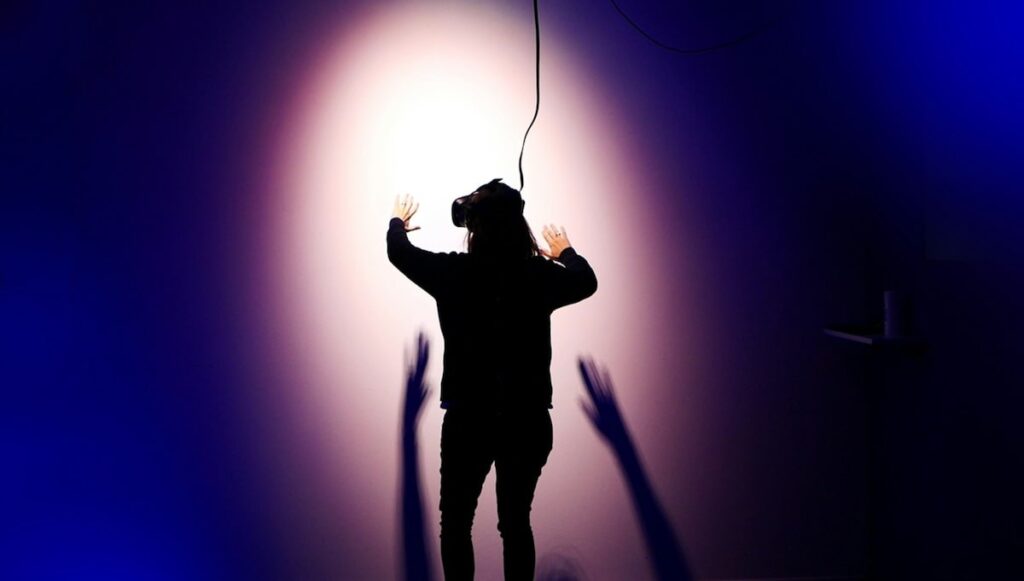
In this review, I delve into ‘Spaces of the Heart. The Psychogeography of Everyday Life’ by Colin Ellard. The book, which is very close to my professional interests, belongs to the canon of popular science literature and is dedicated to the exploration of how buildings and urban spaces, that is the “scenery” in which our daily lives take place, affect our brains and bodies.
In discussing this topic, Colin Ellard takes a historical-evolutionary perspective, using scientific research to explain how the natural and built environments have influenced humans over the centuries, and how they have shaped our responses to both real and virtual spaces.
Colin Ellard is well equipped to analyze such complex issues. He is a world-renowned cognitive neuroscientist working at the intersection of urban design and experimental psychology, and in his daily work he uses an arsenal of tools to gain insight into how the occupants of the buildings and cities he studies respond to the built environment features.
In addition to his academic work at the University of Waterloo in Canada, Colin has worked for many years with architecture and urban planning professionals, museums, and NGOs on projects aimed at enriching the public debate about the built environment. Moreover, as a lover of architecture and design, he travels the world visiting and experiencing cities and buildings firsthand.
Because of its subject matter, the book may be of interest to those who specialize in architecture, urban planning, placemaking, as well as researchers and scholars of the subject, but Colin Ellard writes and explains for a wide audience:
“Almost everyone in the world experiences built space on a daily basis – in our homes, our workplaces, our institutional buildings, and our places of entertainment and education. We all share at least a vague sense that the way in which such settings are designed exerts an influence on how we think and what we do, and we will often seek out particular settings precisely because we want to experience those influences (think of churches and amusement parks, for instance).
But even though we all feel and respond to the design of a building at an emotional level, and even though those feelings influence what we do when we are there, we most often don’t have the time or the inclination to dissect or daily responses to place to make sense of them.”
A Child and a Researcher
The book is tied together by descriptions of two visits to Stonehenge, one of the world’s most famous prehistoric monuments, which become a pretext for opening and summarizing the author’s reflections on the complex nature of the interaction between people and buildings.
Colin Ellard compares his reactions during his first visit to Stonehenge as a child, when he absorbed the atmosphere of the place like a sponge, and a repeat visit as a teenager, when he already felt abstracted from surroundings due to a gradual accumulation of experience and knowledge forming a network of associations dominating the emotional response.
In the introduction, he states that the mission of the book is to find a balance between the approach of the child, with its vivid emotional reactions, and that of the scientist, with his critical sense.
Thus, he makes us realize that it is impossible to separate the experience of space from our conceptual apparatus, which takes the form of a complex network of associations constantly modulating natural emotional reactions. In fact, research in the field of neuroaesthetics confirms that experiential knowledge influences the perception of art and architecture.

As the author points out in the introduction, and what seems relevant to the study of the effects of the built environment on humans, is that the knowledge in the field of the neurobiology of emotions has increasingly advanced.
Thanks to the research of a number of prominent neuroscientists and their teams, including Antonio Damasio, it has become clear that the areas responsible for processing emotions are scattered throughout the brain. This discovery dispels the myth that there is a dichotomy between “mind” and “heart”.
In addition, these discoveries have huge implications for our understanding of how we are influenced by our environment, that is the so-called ‘psychogeography’. Admittedly, the links between architecture and emotion are not new; Vitruvius himself wrote about architecture, aesthetics, and beauty or allure (Venustas).
Neuroaesthetics, a field that studies the neurobiological correlates of beauty and the extent to which the perception of beauty is a universal experience, reveals that an aesthetic experience engages parts of the brain associated with the emotional processing.
Emotional Typologies of Space
Colin Ellard’s book demonstrates us the depth of emotional experience by emphasizing the influence of emotions on body movements, posture, eye movement patterns, and physiological responses such as hormone secretion, skin sweating, or changes in heart rhythm and brain activity.
And it is this depth and solid scientific foundation that in my opinion distinguishes this book from other books on the topic of relationships between humans and architecture.
It is the emotions that, in a way, become the protagonists of the book. The author constructs the narrative by creating a series of chapters dedicated to “emotional typologies of space”, and so we read about the spaces of love, fear, and awe, to name a few.
In analyzing these “emotional typologies,” which are opposed to conventional architectural typologies, the author draws on a wealth of his own experience and extensive knowledge in the fields of neuroscience, environmental psychology, sociology, anthropology, and technology.

This combination of introspection and scientific knowledge, which objectifies experience, captures the spirit of “neurophenomenology,” the current paradigm of research in the field of architecture’s impact on humans.
And so, in the first chapter, we learn more about the biology of habitat selection. Colin Ellard has a wealth of knowledge on the subject due to his past research background, as he spent years studying animal behavior and observing space from the perspective of creatures such as gerbils, rats, mice, and birds, before devoting himself to researching the relationship between humans and space.
We go on to read about the “savannah hypothesis,” which proposes that humans have an innate preference for the East African landscape, natural habitat for a primordial community from which we all descended; Appleton’s prospect and refuge theory; and Ulrich’s research on the impact of the view from a hospital room window on patient recovery.
Relationships With Buildings and People
Next, the author discusses the ease of entering into a relationship with a sculpture that mimics a strong interpersonal relationship, and he slowly introduces us to the topic of responsive spaces.
We learn how in the 1970s, Nicholas Negroponte, cybernetics guru and founder of the Media Lab, a famous department at MIT, envisioned the possibility of combining digital machines with building materials to create a structure that would respond to what was happening inside and around the building. This is the direction that recent projects at MIT’s Media Lab have been taking.
In the chapters that follow, we read about spaces of desire and how love for a building or place is born in the same way as love for a person, and the importance of trust and openness that can lead to a strong attachment to a place, a phenomenon that has been studied and described by environmental psychologists for years.
Colin Ellard also writes about the importance of excitement, which abruptly pulls us out of a state of ‘daily status quo’ into the realm of something new and euphoric. And so the author’s consideration of excitement becomes a contribution to the analysis of our relationship to museum spaces, casinos, and shopping malls.

In the following pages of the book, the researcher takes us from spaces of excitement to spaces of boredom, which are abundant in today’s cities.
We learn about Berlyne’s research on curiosity, how the desire to satisfy a constant hunger for novelty is the driving force behind most of our actions, and how this natural human inclination is rarely taken into account in the design of urban spaces around the world.
Anxiety spaces are the next installment, and early in the chapter Colin Ellard notes that epidemiological research on anxiety-related mental disorders suggests a link between urban environments and our mental condition. He also notes that within neighborhoods characterized by higher levels of social cohesion, residents experience less anxiety and depression.
This is how we arrive at the description of the spaces of awe, emotion evoked since the dawn of time by religious cult buildings, as well as by contact with nature. Interestingly, research on awe demonstrates that this type of emotional experience leads to a shift in cognitive perspective, and as a result we become more altruistic, which can manifest itself in prosocial behavior, among other things.
Technology and Spaces
The last two chapters are devoted to a consideration of ubiquitous technology. The author proposes that our ease of immersion in the virtual dimension can be explained by the structure of the nervous system and our tendency to escape into the world of the imagination. He emphasizes that virtual reality is very useful for research aimed at understanding users’ reactions in spaces.
However, although Colin Ellard is enthusiastic about new technologies and he constantly applies them in his research, he carefully analyzes their impact on our relationship with the environment, showing that they often hinder it.
He justifies this view by explaining that technologies interfere with neurobiological processes that have evolved over thousands of years, such as our ability to create spatial cognitive maps, which we are gradually losing through the use of GPS technology, potentially risking the onset of degenerative processes in parts of the brain responsible for memory.
In my opinion, Colin Ellard has succeeded in the task he set himself at the beginning of the book – in describing the complex relationship between humans and their built environment, he has found a balance between the perspective of a child and that of a scientist.

Having similar professional interests, I was most impressed by his emotional sensitivity to surroundings and vibrancy of his perceptions, as I find it challenging to maintain it while dealing with this subject professionally.
As the author writes, we are living in a time and circumstance that requires us to rethink how we shape our environment, not only in order to survive, but also to preserve our mental health, and to create a so-called “psychological sustainability”; a term used by Colin Ellard himself.
Cognitive science research, combined with modern technologies, gives us an unprecedented opportunity to look deep into the human mind and body and understand our relationship to architecture.
Of course, the author himself points out the risk of a potential collision between architecture and neuroscience, as architects may feel that they are losing the creative freedom inherent in the history and ethos of the profession. But this reasoning doesn’t really have a rational basis. As Colin Ellard said in an interview we did with him last year:
“There’s a lot of science in ensuring that a building doesn’t fall down. There are certain basic principles of physics that you have to follow. I would say that it is the same thing with human science. There are certain underlying principles of human biology and neuroscience that suggest how we ought to build. Pretending that these things don’t exist is just as bad as pretending that gravity doesn’t exist.”
Enjoyed this article?
Support our mission with just €1! Your donation keeps our website running and supports the spread of knowledge about creating places that are good for people.

Natalia Olszewska is a Researcher and Practitioner in Neuroscience Applied to Architecture. Being a graduate in medicine (Jagiellonian University & Tor Vergata), neuroscience (Sorbonne Université & ENS), Brain and Mind studies (UCL) and ‘Neuroscience applied to Architectural Design’ (IUAV university) she works between disciplines and creates insights for people-centered environments.
At work, she combines her deep care for people and their well-being with her passion for architecture and design. Natalia is a co-founder of IMPRONTA, behavioral science and neuroscience consultancy for architecture.